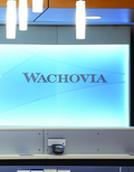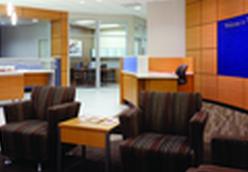When the U.S. Green Building Council (USGBC) established the Leadership in Energy and Environmental Design (LEED) standards in 2002, they were targeting new construction. And while the green rating system has since expanded to include other project types, it’s remained difficult for many retailers to comply, since key criteria do not necessarily apply to retailers’ specific needs. But that’s about to change.
Two retail pilot projects – LEED for Retail and LEED Volume – are now underway. The LEED for Retail effort includes tracks for both commercial interiors (CI) and new construction (NC), while the Volume pilot will allow retailers and other volume builders to certify all subsequent projects once an initial prototype has met the established criteria. The pilots are conducted through a rigorous, multi-step process designed to gather feedback, draft, test and ultimately document point modifications and/or alternative compliance paths in new application guides.
Callison is participating in both pilots simultaneously through our work with Wachovia Corp. The financial services provider asked us to develop a prototype to support its brand expansion into the Western market, while reflecting the company’s commitment to environmental stewardship. Holley Henderson, an eco-consultant who has also served on the USGBC’s National LEED-CI Faculty and Curriculum Development Committees, is working with the Callison team on this project.
Together, we’ve developed a prototype consisting of three baseline models that can be easily translated across regions. A flexible kit of parts, including finishes and signage, allows for regional adaptability and design standardization while presenting a consistent image for Wachovia.
By 2010, Wachovia plans to open more than 300 branches designed and built in accordance with LEED for Retail standards. (The company is also building a 1.2-million-square-foot corporate headquarters in Charlotte, N.C., in accordance with LEED NC Gold standards.) By the end of 2008, every new Wachovia financial center throughout the U.S. will be built to LEED specifications.
Advertisement
Southern California customers will be the first to experience the green banks in December, when the new LEED prototype debuts in Los Angeles with a 35 percent reduced lighting power supply and an impressive 60 percent recycled-content factor.
One of the most exciting opportunities with LEED for Retail is the potential for consumer outreach. Mass retailers have direct contact with large numbers of people. “It’s market transformation at a grass-roots level,” says Henderson. For example, the Wachovia financial centers plan to promote green design and construction through educational displays in each branch. They also plan to provide commuting information, including public transit maps and safe bike routes, along with bike racks and preferred parking for low-emitting vehicles.
Learning Curve
What we’re learning through the pilot program is that issues over which retailers typically have no control (such as parking, leased space or existing building systems) make site selection and lease negotiation critical areas for LEED for Retail. Planning and real estate teams need to be educated about the requirements so that the selection criteria and lease terms reflect LEED goals.
How will LEED for Retail differ from other LEED standards? According to Callison’s LEED certification manager, Cindy Davis, one major issue has to do with how store occupancy will be determined.
“Since the original LEED-CI was developed for the workplace, points regarding lighting, for example, are based on the number of full-time employees,” explains Davis. While retailers may have relatively few employees working in the store, there are many more people on site – a.k.a. customers – for shorter time periods. “Understanding how the work environment and consumer environment overlap is key to coming up with optimal solutions.”
Advertisement
The Volume certification will depend in large part on policy decisions made by the retailer – for example, committing to low-VOC materials for all their stores or furniture made only from wood certified by the Forest Stewardship Council (FSC). The idea is that USGBC will certify a given number of stores based on the prototype and a random site visit, thereby reducing the LEED documentation process for each location and addressing site-specific credits. In so doing, however, the USGBC needs to know the retailer is in it for the long haul – that stores will be built out according to the prototype. Retailers will need to establish specifications, show contracts with vendors and other documentation designed to demonstrate that the sustainable measures will be enacted repeatedly on a planned rollout.
The key to success is strong owner commitment and a can-do team attitude. It’s not easy breaking new ground, and it’s not especially glamorous – the work of making black-and-white decisions in a world of gray is painstaking and time-consuming. But the rewarding part of being involved in any pilot is being able to have a say in how the final LEED product will end up. And a tool that makes green building an even easier choice for retailers is a pay-off we’ll all benefit from.
Sandie Pope is an associate principal at Callison. She has worked exclusively in retail for the past three decades and is committed to integrating sustainable principles into retail design.
photography by Chris Eden, Seattle


 Photo Gallery3 days ago
Photo Gallery3 days ago
 Headlines1 week ago
Headlines1 week ago
 Sector Spotlight2 weeks ago
Sector Spotlight2 weeks ago
 Headlines1 week ago
Headlines1 week ago
 Headlines4 days ago
Headlines4 days ago
 Headlines2 weeks ago
Headlines2 weeks ago
 Designer Dozen1 week ago
Designer Dozen1 week ago
 Headlines2 days ago
Headlines2 days ago















